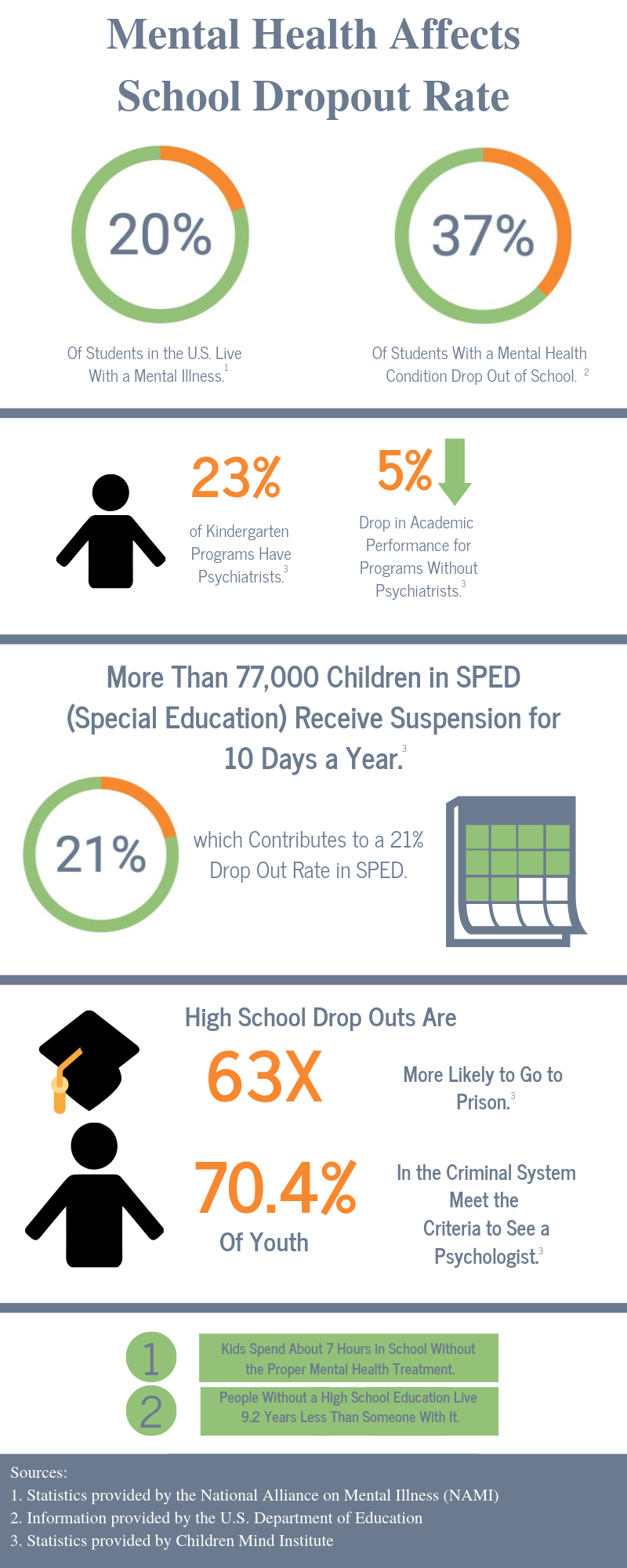Mental Health in Education
Produced by: John Williams
Two states -- New York and Virginia -- have made mental health a mandatory part of school curriculum. Until this becomes a requirement in every state, here are some other things schools are doing to increase mental health awareness among their students.
Produced by: John Williams
In the middle school to high school age group, there are roughly 10 million American students who live with a mental health challenge. This is why it is crucial that more schools look to hire school psychologists.
Continuing Education
Many students who live with mental illness are more likely to have some difficulty in school. In fact, 60% of high school students living with a mental illness drop out. This could be due to people around them telling them that they should not continue their education, based on stigmas and fears. Sometimes friends, families and educators express these reservations to the person living with the mental health condition, and students end up believing it themselves. This can lead to the student not wanting to continue their education.
Another reason why the mental health drop out rate of students living with a mental health condition is so high could be due to there being a lack of resources and knowledge about mental illness. When looking at students between the ages of six and 17 that are in of need mental health services, studies show that nearly 80% of them won’t receive the services that they need. This is an alarming statistic and could be a large contributor to the large mental health condition related school drop out rate.
Section 504 of the Rehabilitation Act of 1773 states, “No otherwise qualified individual with a disability in the United States . . . shall, solely by reason of her or his disability, be excluded from the participation in, be denied the benefits of, or be subjected to discrimination under any program or activity receiving Federal financial assistance.” Section 504 applies to all public elementary and secondary schools and says that education personnel must provide accommodations to both the known mental and physical limitations of a student.
But many mental health conditions or symptoms are not easily recognized in a classroom setting, and some teachers may not be trained to see these signs. Some symptoms of mental health conditions could be personality changes over time, extreme highs and lows, social withdrawal, changes in eating and/or sleeping habits and even suicidal thoughts. These symptoms are not always apparent to educators which could leave many students in need of help going unnoticed.
Another reason why students may drop out is the simple fact that they may just need a break. For someone living with mental health issues, sometimes going to school can be too much for them. In an effort to make their mental health a priority, some students may just take a leave of absence from school until they feel better. This can also be common for people living with mental health challenges while they are in college.
It’s important for students to make their mental health a priority and sometimes taking a leave of absence is the best way to do that. College brings its own set of stresses and issues, and it is the first time that many are living on their own. Sometimes students cannot bring themselves to participate in campus programs and events. Students may also feel the stress of most people who are experiencing the pressure to do well in college.
It is important to know that if someone is diagnosed with a mental illness, it does not mean it is the end of their academic career. Most people face the stigma that people living with mental illness are overly dependent and helpless, and this is simply not the case. In a blog from the National Alliance of Mental Illness, the writer explains how her son was diagnosed with schizophrenia during his junior year of college. Her son ended up getting mental health condition under control and also ended up graduating.
There are several other routes people can take when it comes to continuing their education after a diagnosis. Institutions like correspondence schools, tele-course learning and even vocational schools are other great alternatives that people living with a mental illness condition can do in order to continue their education.
Written by: Rahmere Griffin


This work is licensed under a Creative Commons Attribution-NonCommercial-NoDerivatives 4.0 International License.


